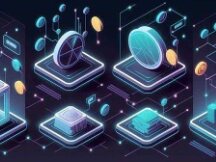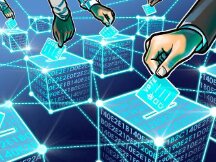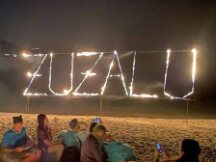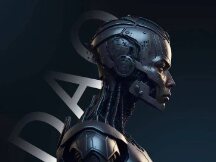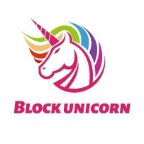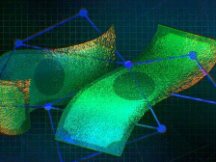6 key meetings for DAOs to be successful
We often spend our time in groups and organizations.Anyone who's been through this will spend tens or hundreds of hours thinking: how can we make it better? Why do we do good things together and fix things quickly when problems arise? How can I make my community happy and engaged?
Historically, most of the information was provided to organizations by looking at the "good" groups and comparing them to the "bad" groups. Naturally, this approach leads to an expansion of what the team accomplishes, but it doesn't necessarily have to understand why they are so good or what it would take from “bad” to “good”.
Fortunately, Web3 provides a great opportunity to think about principles, which is why today we're going beyond buzzwords like responsibility or sanity. Instead, I'll provide a framework you can use to understand which DAOs you need to focus your attention on.
The interaction causes or interrupts DAOs.
This old testimonial is the tally of the five people we spend the most time with and today, but even with Web3 we're still in star artist culture.
A few years ago, our Harvard instructor discovered that little research had been done on star performers, despite the hype. To change that, they tailored the needs of CEOs, scientists, and software developers, as well as experts in investment banking, public relations, board governance, and rule of law. They find that the best actors in all of these groups are closer to comets than to stars. They did well and recently failed until they quit one company and moved to another.
For all of these great people, the groups and communities around them seem to play a vital role in their success.
Another Harvard professor, JR Hackman, concluded that the design and modeling team comprised 60% of the working group. It offers similar benefits to leaders of intellectual organizations, classical orchestras, and technology companies.
After all, the success of an organization is not determined by the strength of an individual as an individual, but by the communication and cooperation of individuals. DAO creators often forget this lesson, split two or more communities, and leave participants behind.
More than anywhere else, the leadership role in DAOs is simply to create an organization that maximizes benefits for communities.
There are similar advantages
One of the questions I have faced over the past ten years is which interaction creates the most value for the organization. Exploring responses has led me to explore emotional states, self-control, creativity, and behavior. He guided me through the craze of Michelin starred restaurants for decentralized digital cooperatives, FTSE 100 companies and various DAOs. I conclude :
Because these interactions are important to make or break organizations, especially decentralized ones.
Master the 6 Core DAO Interactions
So you need a DAO that can deliver efficient operations, maximize your resources, attract more talent, and drive the growth of your entire ecosystem. DAO faces more problems than collisions. A DAO in constant evolution.
It can be close to ideal or far from ideal. No problem. This is important for organizing learning and development, and for gaining strength from the process. These key interlocks (SKI) should turn the steering wheel and push the operator towards the (reconfigured) steering wheel.
SKI is built around six problem areas that DAO (and each of its parts) seeks to resolve.
Personnel:Who are we and what do we need?
Future:As our environment changes, how can we adapt to meet these standards?
The diversity:How to move from here to the future?
Modifications:How do I get to my job?
the description:What do you do every day to add value to your participants?
Support:How can we ensure that everyone can do their best in the stable?
personnel
Identity Interaction explores the following questions:
Who do we need to help?
Why do we live together?
Who is our foundation?
It is also the foundation of culture, ethics, values and beliefs, which is the foundation of cooperation. Identity Interaction uses rituals, stories, and slogans (such as the names of important historical or tribal stories) to bring groups together, strengthen relationships, and create shared relationships together. By exploring, refining and demonstrating this shared identity, the team can develop a sense of community, a sense of belonging and a deep commitment that goes beyond business relationships.
But perhaps more importantly, the most important thing is the strong attitude that supports the change team, believing that they will be the center of their work. Personal interactions provide security and continuity in a rapidly changing environment.
Incidentally, we have developed a framework called "Survey Questions" to enhance the role and purpose statement that defines the identity of the DAO.
in the future
Future Interaction seeks to answer the following questions:
How has our environment changed?
What is our vision of the future?
What new potential do we need to explore?
It is in these interactions that new avenues of intervention, innovation and experimentation emerge. Understanding what's going on in the DAO environment is all about finding weak signals, identifying patterns, and using those patterns to understand that DAOs need to be successful and put themselves in place to be successful.
By definition, future interactions are conducted in conjunction with uncertainties. They need ambition, creativity and guesswork. However, because human tendencies lead to injustice and many other inaccuracies in decision making, future interactions, whether dreamers or people, engage in a balance of happy ideas. and rigorous experiments.
More importantly, these interactions give DAOs vivid possibilities. They offer a combination of personality with common goals. They are doing the impossible.
cash
Edit the discussion solution below:
How to bridge the gap between the present and the future?
Which path do we choose?
How can we transform into a team?
And - more rules - what is our strategy?
All of these interactions focus on critical maturity and learning to change, as well as the growing environment and discomfort. Transformation is the key to letting go and embracing the new, or more poetically about death and resurrection. After all, constant renewal is the essence of life.
When we are able to balance patterns and make changes easily, health-altering interactions occur that can contribute to our discomfort without breaking us down. More concretely, the changes are:
A high-level strategy to focus DAO on specific projects and post-project implementation to achieve those goals.
Rapid changes, determining the environment, lead to many small changes that create larger changes over time.
Maintaining the capacity of health to cope with change means encouraging stakeholders to make decisions, large and small, "at the edge" (locally, in groups or in sub-DAOs). Trust allows DAO to be both fast and efficient for external transitions. Indeed, the group can move alone without waiting for the approval of the whole community. Both provide attendees with a personal, engaging, and inspiring experience, and allow them to use detailed information about their circumstances, skills, and interests to improve outcomes for their customers, consumers, and other stakeholders.
modifications
The nature of the partnership resolves the following issues:
How do you communicate within and between groups?
How and where do you store your knowledge and information?
What standards and procedures should I follow?
How to reduce and resolve conflicts?
The joints in the joints are the lubricant of the organization and like the collision lights of vehicles, these joints can prevent collisions between people and groups, especially when everyone is running fast.
This work is divided into three sections.
Construction:Identify how you and other stakeholders work together, for example by selecting project management tools or discussing DAO communication standards.
Edit:Consider updating your to-do list, scheduling tournaments, having daily or weekly meetings, or letting your team know about delays.
Solve the problem:When shit hits a fan, for example problems. Of course, there are measures to prevent this from happening, such as ensuring that advisors and trainers build relationships. ~
job
Ops Interactions addresses the following issues:
What do we need to do every day to create value for our community?
How can we do well what we do?
How to deliver good products?
These interactions cover all the small tasks and processes that make DAO operations day-to-day: what is necessary to deliver the product or service you are responsible for.
Ops answers questions from customers, sales, coding software, interested attendees, and all critical functions of each department. For example, discuss a job with a colleague on how to answer the questions above, provide answers for a job, or ask an adult consultant. These interactions include product development, continuous improvement, training and quality control.
Interactions with operations are generally grouped by expertise (also financial, sales or HR services). However, you can see the activities grouped by product or region, or you can divide them into sub-DAOs that sell services to individuals within your organization. .
Support
Encourage interaction to create space for questions such as:
What do you need to support the team?
Which team can support your body, mind and intellect?
The first five interactions fix the entire DAO, but support is all about listening and helping anyone who needs it. Support is the foundation of health, training and career development.
These interactions allow us to see our employees as human beings and to recognize the impact of their work on their (mental) health and well-being. Support is important because it inspires people to do their best and makes them feel valued, watched and satisfied. This, in turn, leads to a secure need for innovation, close collaboration and precise accountability.
Fundamentally, supportive interventions allow communities to get the most out of every interaction.
skiing as a means of travel
As described personally, for additional interactions with each other. We must support both. It also means that problems in one interaction can cause problems in another. But don't let that put you off. Full control of the interaction is a daunting task, and there is no perfect organization. Therefore, SKI's role is not to seek achievement, but to focus on the things that matter most and to focus on the community. Contribute to your health and that of your community by creating daily leisure, learning and development activities.
So whenever you want to know how to change your DAO, ask yourself. What's the best way to have 6 major impacts in our special content?

Scan QR code with WeChat

